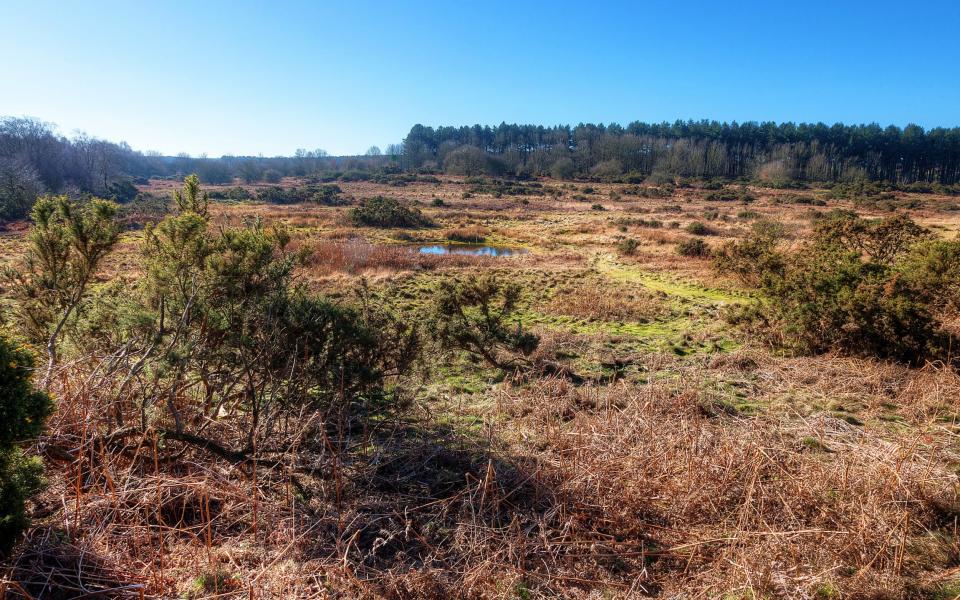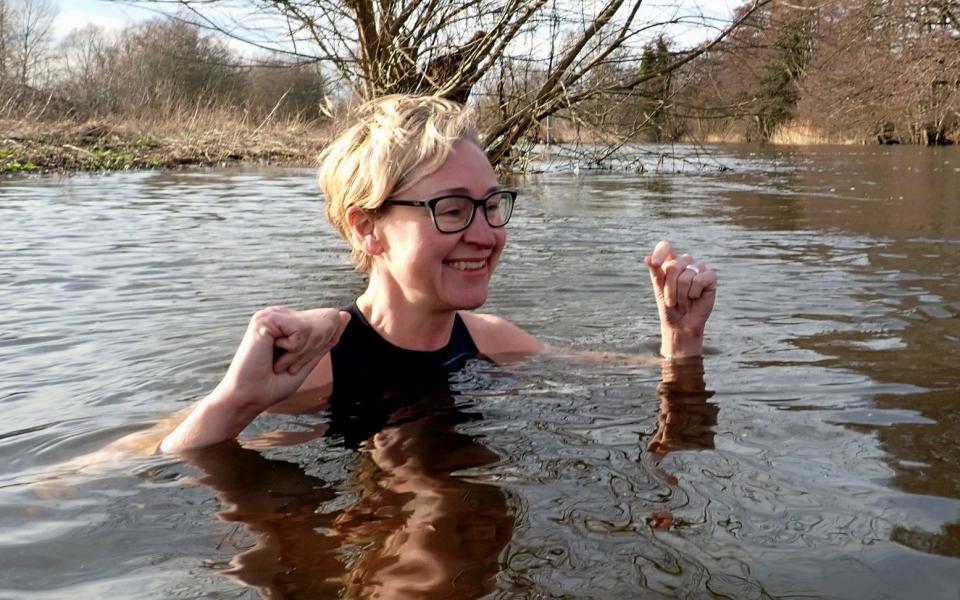Welcome to the Brecks, England’s most peculiar place

There is a giant memorial on the side of the A11, standing amid the twisted pines. It was erected to commemorate the local First World War dead. To my family, though, it’s “Grandma’s Monument”. Years ago, caught short on a road trip out of our native Norfolk, my grandmother relieved herself in sight of the column – and stung her nethers on a nettle.
I mention this only because most people’s experience of this Norfolk/Suffolk hinterland is similarly brief. Not lingering to look around, but flying by on what used to be the old Roman road between London and Norwich. I’ve done it many times myself: clocked the monument, noted how its surrounds look strangely like the African savannah, then carried on without stopping to find out why.

Well, not this time. I’d come to actually visit the Brecks, this “broken land” of sandy soil, dry heath, acid grasslands, glacial ponds, fluctuating meres, abundant archaeology and Britain’s largest lowland pine forest. It isn’t a designated National Landscape. But, explained Nick Dickson, manager of the National Lottery-funded Brecks’ Fen Edge & Rivers Landscape Partnership Scheme, it was “top of the list that didn’t make it”. The Brecks is 40 per cent covered by conservation designations and harbours 28 per cent of all the UK’s rare species. “It was recognised as very special,” added Nick.
So, rather than driving through the Brecks, I walked in. The Lark Valley Path runs from Bury St Edmunds, at the Brecks’ southern fringes, to Mildenhall. The Lark, a rare chalk river, once provided a major trade route for goods to the North Sea; the Romans canalised parts of it, and pleasure boats ran to Bury until around 1910. Now it’s navigable only by canoe, its waters empty but for otters and kingfishers.

I strolled past its old locks, village churches, cast-iron bridge and snowdrop woods and, after eight peaceful miles, arrived at West Stow Country Park’s Anglo-Saxon Village. Basil ‘Sutton Hoo’ Brown originally excavated West Stow; though evidence has shown the site was used from the Mesolithic to the late Medieval, its main interest is Anglo-Saxon. The remains of 69 sunken feature buildings (SFBs) have been found.
“We think it was settled in AD 420-ish,” said heritage officer Stephanie Paull, showing me around. “When the excavation finished [the archaeologists] had new ideas of how these buildings might have been built. They wanted to see if their theories would work so they built one. Then the rest were made using different techniques. The whole point is that we’re a big archeological experiment.”

Stephanie took me into the reconstructed SFBs, some wood-smokey, some hearth-less, some with windows, some without, some with floors and sleeping platforms, some bare. The houses here are best guesses, and all the more interesting for it. “The questions keep you up at night,” Stephanie said. “But I love the idea you could go back in a time machine and find out it’s all wrong. This site is so important, so fluid.”
You can’t stay in the Village, but you can sleep down the road. Tucked into a patch of woodland, on the edge of the King’s Forest, West Stow Pods give a hint of wild Brecks living, albeit with kitchenettes and proper beds. Owner Jan Lengyel showed me to “Wulfrun”, my Anglo-Saxon-named cabin for the night, and told me just how much other old stuff lies hereabouts. “Within a mile, there’s Beeches Pit, where they found evidence of the oldest use of fire in Britain, dating back 450,000 years,” Jan told me. “The whole area is amazing.” I was beginning to agree.

The next morning I met Nick Dickson, who drove me down Brecks backroads, via endless forest and important heath, to learn more about the restoration of the region’s waters, including its pingos. A peculiarity of the Brecks, more commonly found in the Arctic, pingos (Inuit for “small hill”) are shallow ponds formed by glaciers at the end of the last Ice Age, fed by underground aquifers. “There’s a tonne of independent hydrology going on,” explained John Preston of the Norfolk Wildlife Trust. “There could be two next to each other, one full, one empty. It baffles you.”
We’d met John at Thompson Common, at the start of the Pingo Trail, a seven-mile walk via landscapes that look like Louisiana bayou. There are 400 pingos here, “some pristine”, said John, “others dark, dank and horrible – but there are rare species that like them that way.”
He told me about reviving plough-damaged “ghost pingos” to create more habitats for species such as pool frogs –England’s rarest amphibians – which like to serenade here on summer evenings. As he spoke, eight red deer crashed out of the trees, and the hedgerows trilled with yellowhammers and finches.

A big part of the Brecks’ Fen Edge & Rivers scheme is promoting health and wellbeing, and connecting both locals and visitors to the landscape. One strand of this has been the Healing Waters outdoor swimming project, which has provided opportunities for people to try wild swimming in a safe environment. This explains how I ended up dipping in a full and frigid Little Ouse River on a February afternoon, with some curious swans and a handful of swimmers.
One was Ellen Kirkby; she attended an intro session 18 months ago, found it hugely beneficial and now runs her own swim group. “I’ve lived on the edge of the Brecks all my life,” she told me, “but I’d never explored it until I started swimming.”

While the water was diverting, the Brecks’ most iconic features are its pine lines: rows of bent Scots and Corsican pines, strikingly silhouetted against big East Anglian skies. Why are they here? Nobody knows. The best theory is that, in the 19th century, an enterprising nursery-man had a job-lot of trees to sell and managed to convince landowners that they’d make good hedges. These pines were subjected to extreme pruning, which caused them to grow tortured and twisted. “When new pine lines are planted now,” Nick told me, “the same haircutting is done to encourage the twisty shape.”
They are odd. But so is much about the Brecks. Here, the sounds of star species such as curlew and nightjar mix with gunfire from the Stanford military range, a huge area that’s curiously useful for conservation. Seemingly barren swards are rife in rarities such as Spanish catchfly and speedwells. And the archeology spans from ancient to contemporary – tanks and trench warfare were tested here, and their ruts can still be found amid the trees.
Yes, the Brecks is weird. But it’s certainly worth a stop.
How to do it
Sarah Baxter was a guest at West Stow Pods (01284 728136; weststowpods.co.uk), which has Mega Pods from £84pn for two adults; its Pod Hollow, a faithful recreation of a Hobbit hole, costs £210pn for two adults (separate rooms available).
Entry to West Stow Anglo-Saxon Village costs £7/£4 adult/child (01284 728718; weststow.org).
For more information, see brecks.org/bfer, discoversuffolk.org.uk and imogensriverswims.co.uk.
Great Anglia serves stations including Bury St Edmunds, Thetford and Brandon (greateranglia.co.uk).


